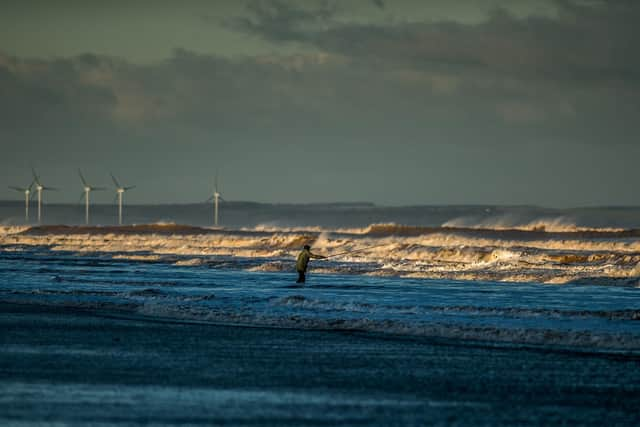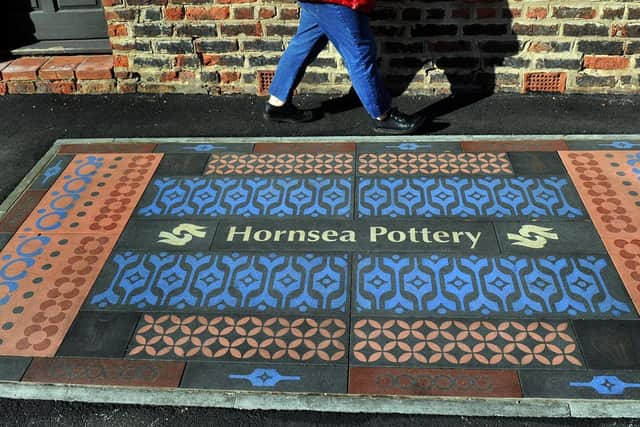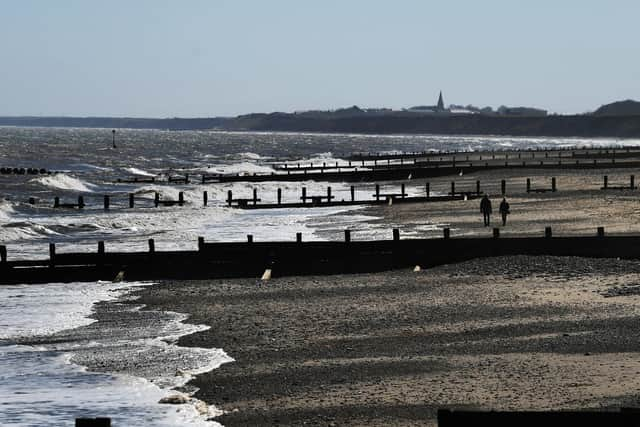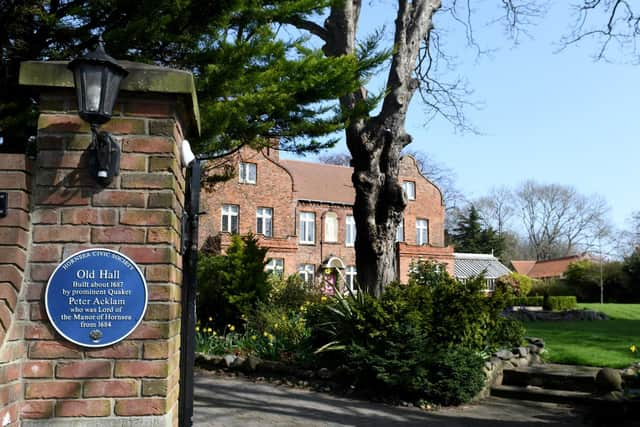Hornsea highlights from its famous pottery to award-winning beach visited by Charlotte Brontë
The East Yorkshire seaside town of Hornsea was once known around the world for its pottery, which was exported to more than 50 countries.
Although the pottery that made the town famous and once attracted scores of day trippers is long gone, Hornsea still has plenty of appeal for visitors. For starters, it boasts the largest natural lake in Yorkshire.
Advertisement
Hide AdAdvertisement
Hide AdHornsea Mere extends to 467 acres and is all that remains of a huge wetland that was once made up of many smaller meres and marshland. A Site of Special Scientific Interest (SSSI), it’s of international importance for birds, with large numbers of wildfowl spending the winter there.


For more than 100 years, generations of families have enjoyed the opportunity to hire a rowing boat and head out onto the lake. These days there’s also an 18-hole putting green, a cafe and a gift shop.
During the Middle Ages there were a series of disputes between St Mary’s Abbey in York and Meaux Abbey, near Beverley, over the right to take fish from the Mere. When the monasteries were dissolved, Hornsea Mere was seized by the Crown but, in 1595, it was bought by Marmaduke Constable of Wassand and still remains part of the Wassand estate today. It first opened to the public for rowing and fishing in 1885.
Housed in a characterful, 18th century farmhouse on Newbegin, the town’s main shopping street, Hornsea Folk Museum may not be Yorkshire’s biggest or flashiest museum, but visitors can step back in time to the Victorian era and wander through a series of different rooms, including a classroom and a doctor’s surgery. In all, there are more than 2,000 exhibits, including many items connected with village crafts, farming and local history.
Advertisement
Hide AdAdvertisement
Hide AdDuring the summer months, there are often interactive activities for children, as well as crafting demonstrations.


There’s also a display devoted to Hornsea Pottery, making it a must-see attraction for anyone who would like to learn more about the heyday of this once thriving cottage industry.
Formed in 1949, it quickly grew into the Hornsea Pottery Company and earned a reputation for both innovative design and creative manufacturing methods.
For a time, Hornsea Pottery was one of the most popular tourist hot spots in Yorkshire, offering guided factory tours, a tearoom and a host of other attractions. However, during the latter part of the 20th century, the pottery was unable to compete with cheap foreign imports and production finally ceased in 2000.
Advertisement
Hide AdAdvertisement
Hide AdIf you visit Hornsea Folk Museum, look out for Bettison Folly, a Grade II-listed structure dating back to the 19th century and decorated with locally made “treacle” bricks.


I would also recommend a trip to Honeysuckle Farm, which was a firm favourite of ours when my daughters were younger. Covering 46 acres of grassland, it’s home to a variety of farm animals. Highlights include the shire horse cart rides and homemade Jersey ice cream. A family owned attraction, it normally opens for the summer season in mid-March and closes on the first Sunday in September. Late spring and early summer is a great time to visit as there are usually plenty of baby animals for children to see.
It would be remiss to write about Hornsea without mentioning what many would regard as its main attraction – its promenade and long swathe of Blue Flag award-winning beach. From the end of the 18th century, the increasing popularity of sea bathing brought mainly middle class visitors to Hornsea.
Even the author Charlotte Brontë was among those who visited and one of the highlights of the summer season was the third week in July, when horse racing took place on the beach.
Advertisement
Hide AdAdvertisement
Hide AdHowever, it wasn’t until the railway line from Hull opened in 1864 that Hornsea’s transformation from agricultural village to bustling town and tourist destination really began. At the turn of the nineteenth century, Hornsea, or Hornsea-with-Burton as it was officially known, had a population of just 533 but, with Hull just a 25-minute train ride away, it became possible for middle-class commuters to live in Hornsea and travel to work in Hull.


The railway not only led to the rapid expansion of the town, but also brought a far greater influx of holidaymakers and tourists, and created jobs.
For a time Hornsea even had its own pier – a must-have addition to any Victorian seaside resort. Sadly, it proved to be a short-lived feature on the seafront. Its development was championed by local businessman Joseph Armytage Wade, who had inherited Hornsea House, a grand property on Eastgate, in 1853 and had also campaigned for the development of the railway.
After years of setbacks and problems, the pier was completed in 1880, only to be damaged by a ship during a storm. Although it was repaired and opened to the public on Regatta Day in 1881, it ended up being 250 feet shorter than originally planned. It remained open for just 16 summer seasons before being sold for scrap in 1897.
Advertisement
Hide AdAdvertisement
Hide AdLocated on the Esplanade, the Floral Hall was originally designed in the style of a Victorian pavilion.
The elegant cast iron, steel and glass structure was built by Messrs JK Barr and Son of Hornsea and Messrs WH Heywood of Huddersfield.
It opened in 1913 with a concert attended by 600 people and became a popular venue for dances and live music.
Between the 1960s and the 80s, the likes of Dexys Midnight Runners and the Bay City Rollers played there.
Advertisement
Hide AdAdvertisement
Hide AdThe appearance of the building changed dramatically over the years following a series of refurbishments and by the early part of the 21 century, the once glamorous venue had fallen into decline.
However, it clearly still held a special place in local people’s hearts, because when East Riding Council announced its intention to demolish the building there was uproar. After lengthy negotiations, it was sold to the community for the princely sum of £1 and is now run by local volunteers as an events venue.
More recently, the council gave the boat compound and visitor facilities on South Promenade a £3.5m upgrade to help safeguard jobs and create a free visitor car park and picnic area, as well as offering improved access to the boathouse and the rest of the promenade.
Visitors to Hornsea still enjoy taking a stroll along the promenade, just as the Victorians did. Nowadays, a series of distance markers featuring different seabirds enable people to track how far they’ve walked.
Advertisement
Hide AdAdvertisement
Hide AdDuring the quieter winter months the sand and shingle beach is popular with dog walkers, but between May 1 and September 30 dogs are banned and it’s very much bucket and spade territory.
Whatever the season, as far as I’m concerned no trip to Hornsea is complete without a stop-off at Sullivans, which has been serving up tasty fish and chips on the seafront since 1980.